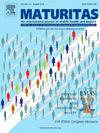Change in body size associated with all-cause mortality in an older Chinese population
IF 3.6
2区 医学
Q2 GERIATRICS & GERONTOLOGY
引用次数: 0
Abstract
Objective
Evidence of an association between a change in body size and the risk of all-cause mortality is limited among older populations. We explored the association of a change in body size over three years with the risk of all-cause mortality in an older Chinese population.
Methods
A total of 5134 participants from the Chinese Longitudinal Healthy Longevity Survey (CLHLS) were recruited. Cox proportional-hazards models were used to assess the association of changes in body mass index (BMI) and body fat percentage (BF%) with risk of all-cause mortality, using hazard ratios (HRs) and 95% confidence intervals (CIs).
Results
Of the 5134 participants (median age, 81 years; 2716 women [52.90%]), 1494 deaths were observed over a median of 4.08 years of follow-up. Compared with participants with stable body size (change within 5%), those with more than a 10% decrease in BMI or BF% had 36% and 46% higher risks, respectively, of all-cause mortality (HR = 1.36, 95% CI: 1.17–1.59; and HR = 1.46, 95% CI: 1.25–1.72); also, those with more than a 10% increase in BMI or BF% had 22% and 17% higher risks of all-cause mortality (HR = 1.22, 95% CI: 1.05–1.41; and HR = 1.17, 95% CI: 1.02–1.35).
Conclusions
This prospective cohort study of older adults suggests that a dramatic change in body size was positively associated with a higher risk of all-cause mortality. More attention should be paid to the effects of a dramatic change in body size, particularly a dramatic decrease in body size, among the Chinese population.
中国老年人体型变化与全因死亡率的关系
目标在老年人群中,体型变化与全因死亡风险之间相关性的证据有限。我们在中国老年人群中探讨了三年内体型变化与全因死亡风险之间的关系。方法 我们从中国健康长寿纵向调查(CLHLS)中招募了 5134 名参与者。结果 在5134名参与者(中位年龄81岁;2716名女性[52.90%])中,在中位4.08年的随访中观察到1494例死亡。与体型稳定(变化在 5%以内)的参与者相比,BMI 或 BF% 下降超过 10%的参与者的全因死亡风险分别高出 36% 和 46% (HR = 1.36,95% CI:1.17-1.59;HR = 1.46,95% CI:1.25-1.72)。结论这项针对老年人的前瞻性队列研究表明,体型的急剧变化与较高的全因死亡风险呈正相关。应更加关注体型急剧变化,尤其是体型急剧下降对中国人群的影响。
本文章由计算机程序翻译,如有差异,请以英文原文为准。
求助全文
约1分钟内获得全文
求助全文
来源期刊

Maturitas
医学-妇产科学
CiteScore
9.10
自引率
2.00%
发文量
142
审稿时长
40 days
期刊介绍:
Maturitas is an international multidisciplinary peer reviewed scientific journal of midlife health and beyond publishing original research, reviews, consensus statements and guidelines, and mini-reviews. The journal provides a forum for all aspects of postreproductive health in both genders ranging from basic science to health and social care.
Topic areas include:• Aging• Alternative and Complementary medicines• Arthritis and Bone Health• Cancer• Cardiovascular Health• Cognitive and Physical Functioning• Epidemiology, health and social care• Gynecology/ Reproductive Endocrinology• Nutrition/ Obesity Diabetes/ Metabolic Syndrome• Menopause, Ovarian Aging• Mental Health• Pharmacology• Sexuality• Quality of Life
 求助内容:
求助内容: 应助结果提醒方式:
应助结果提醒方式:


